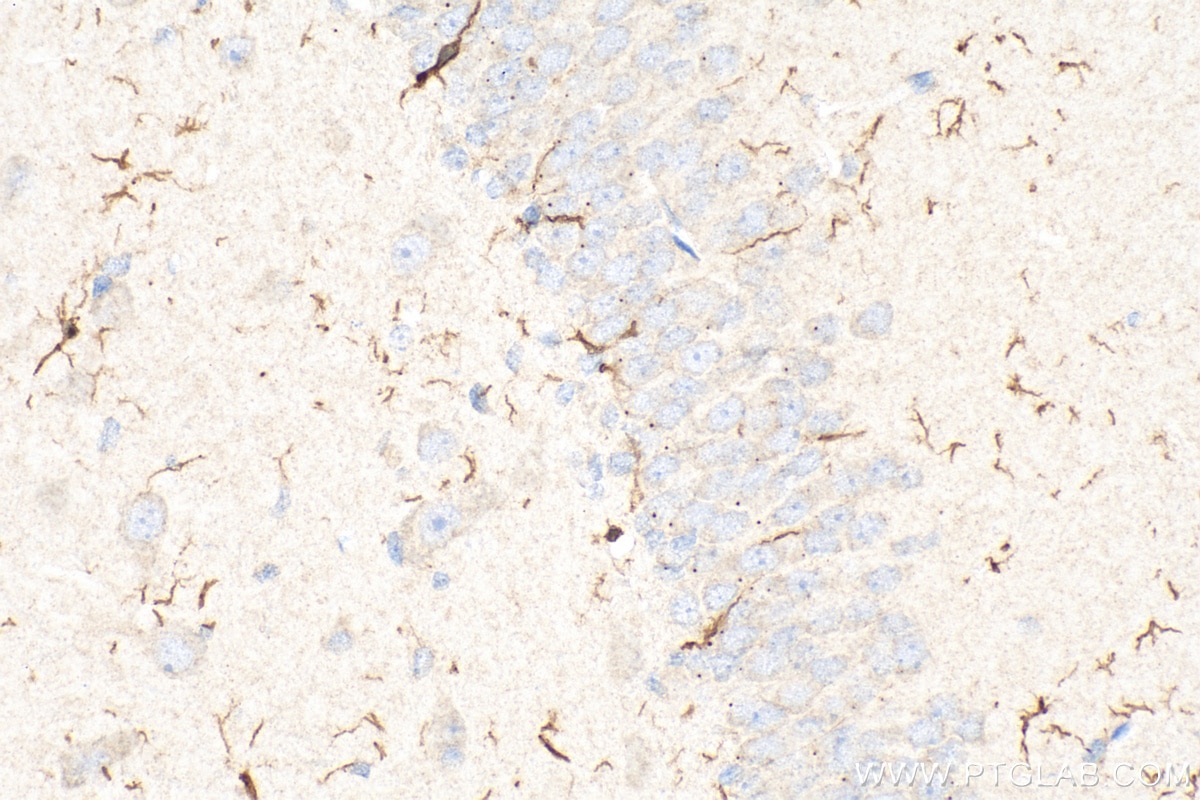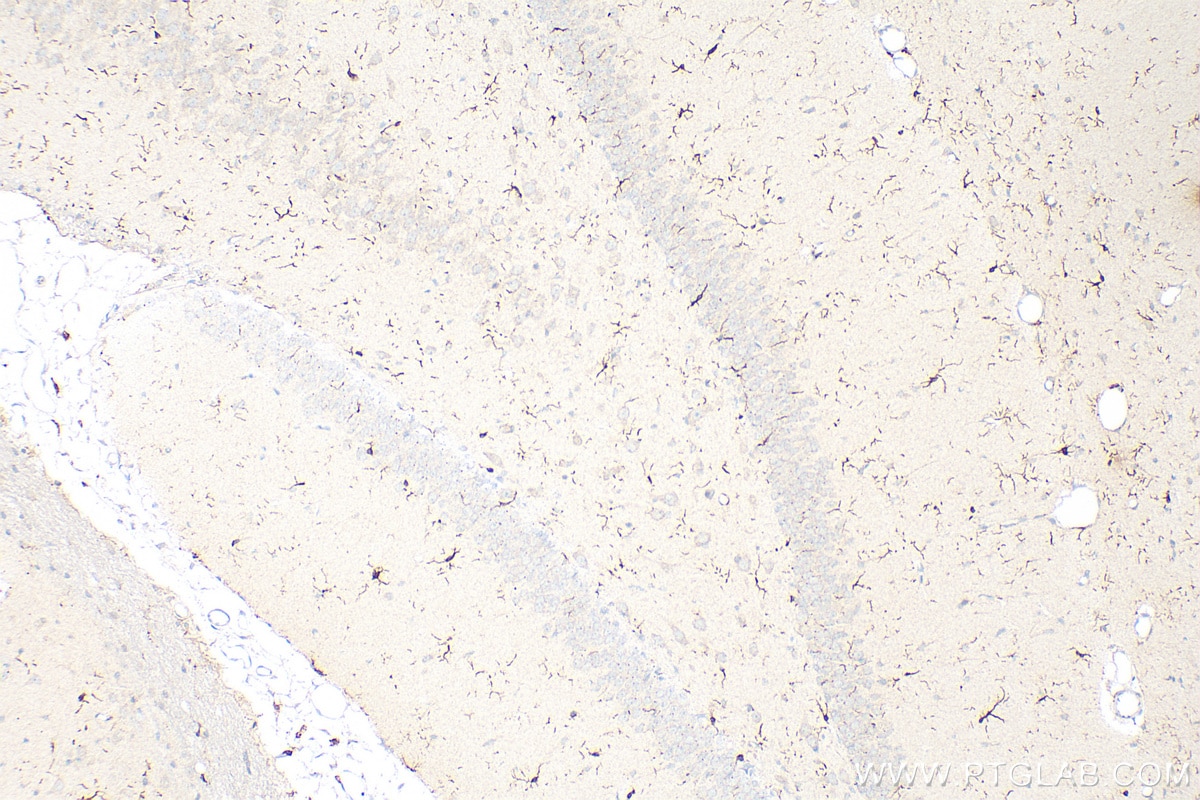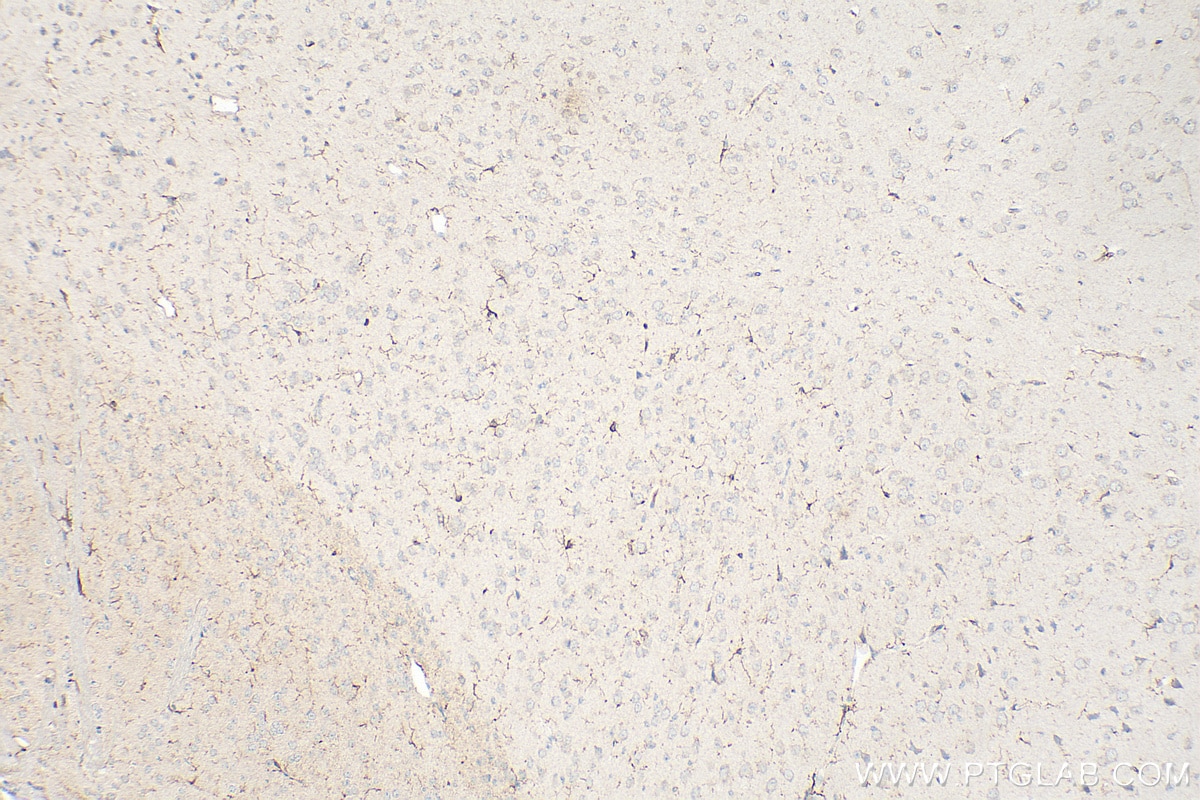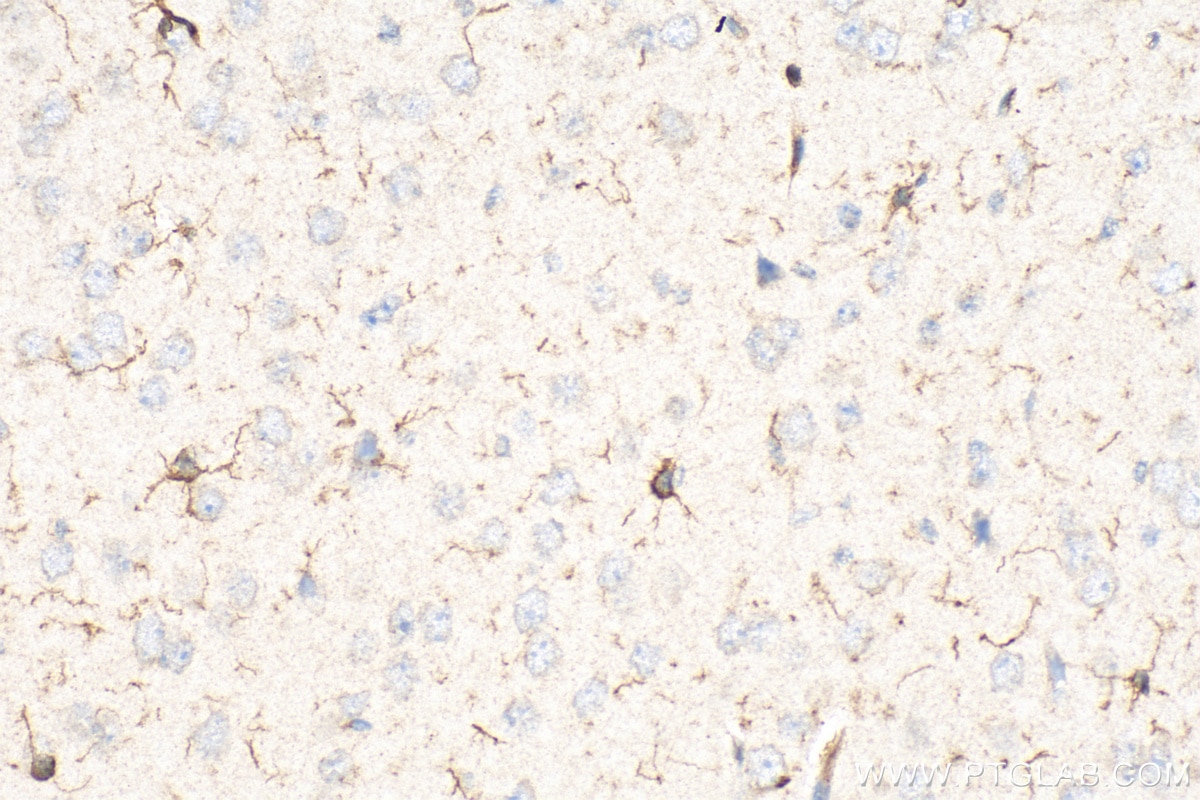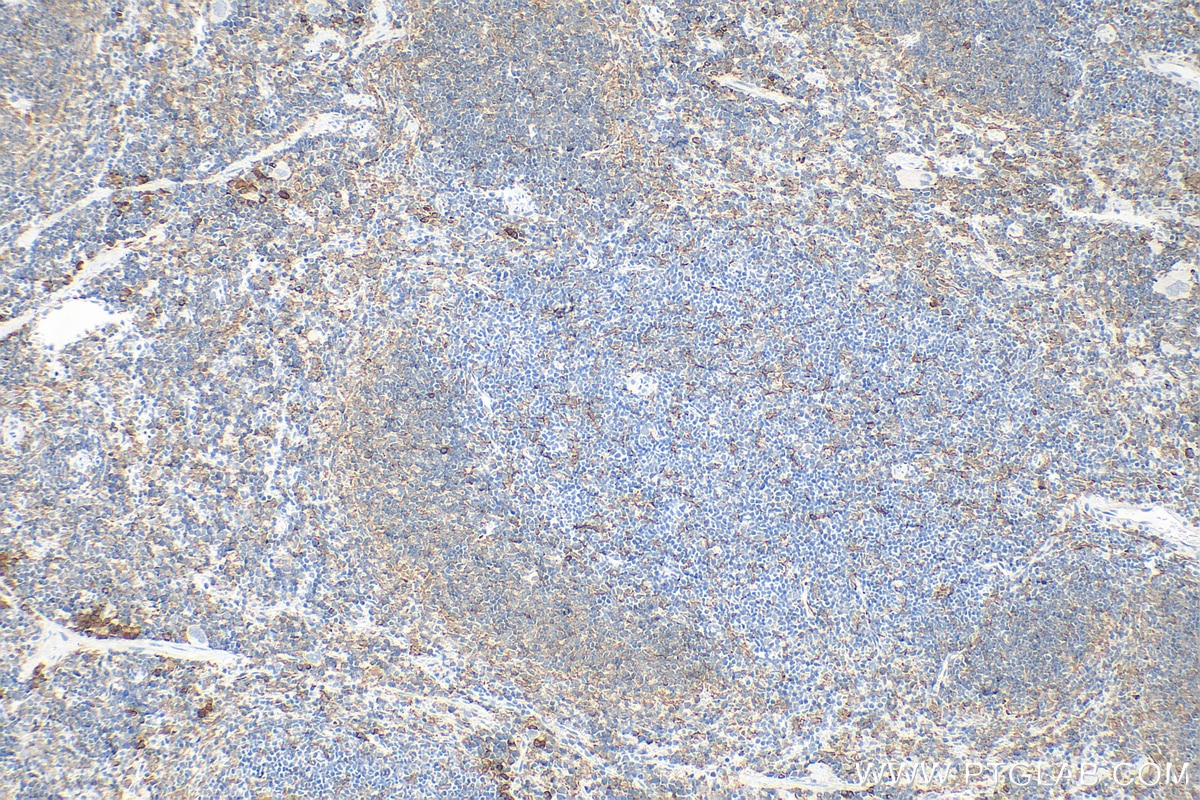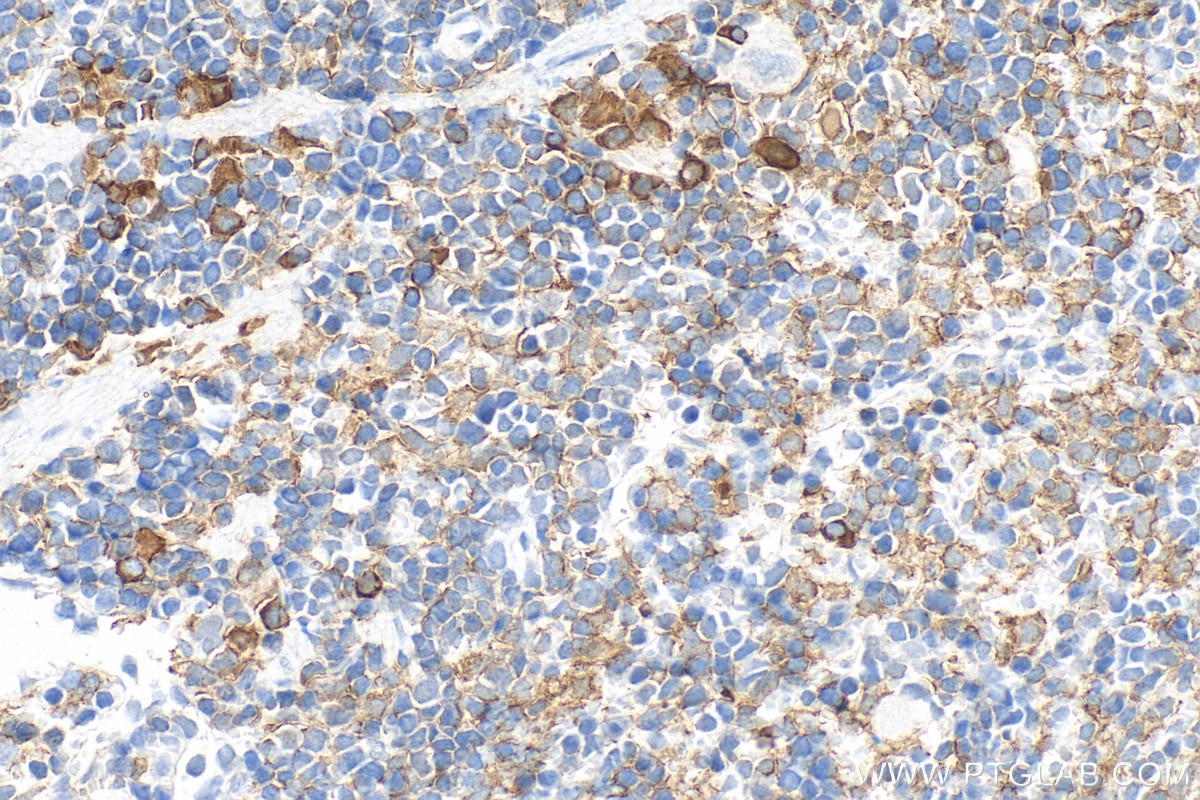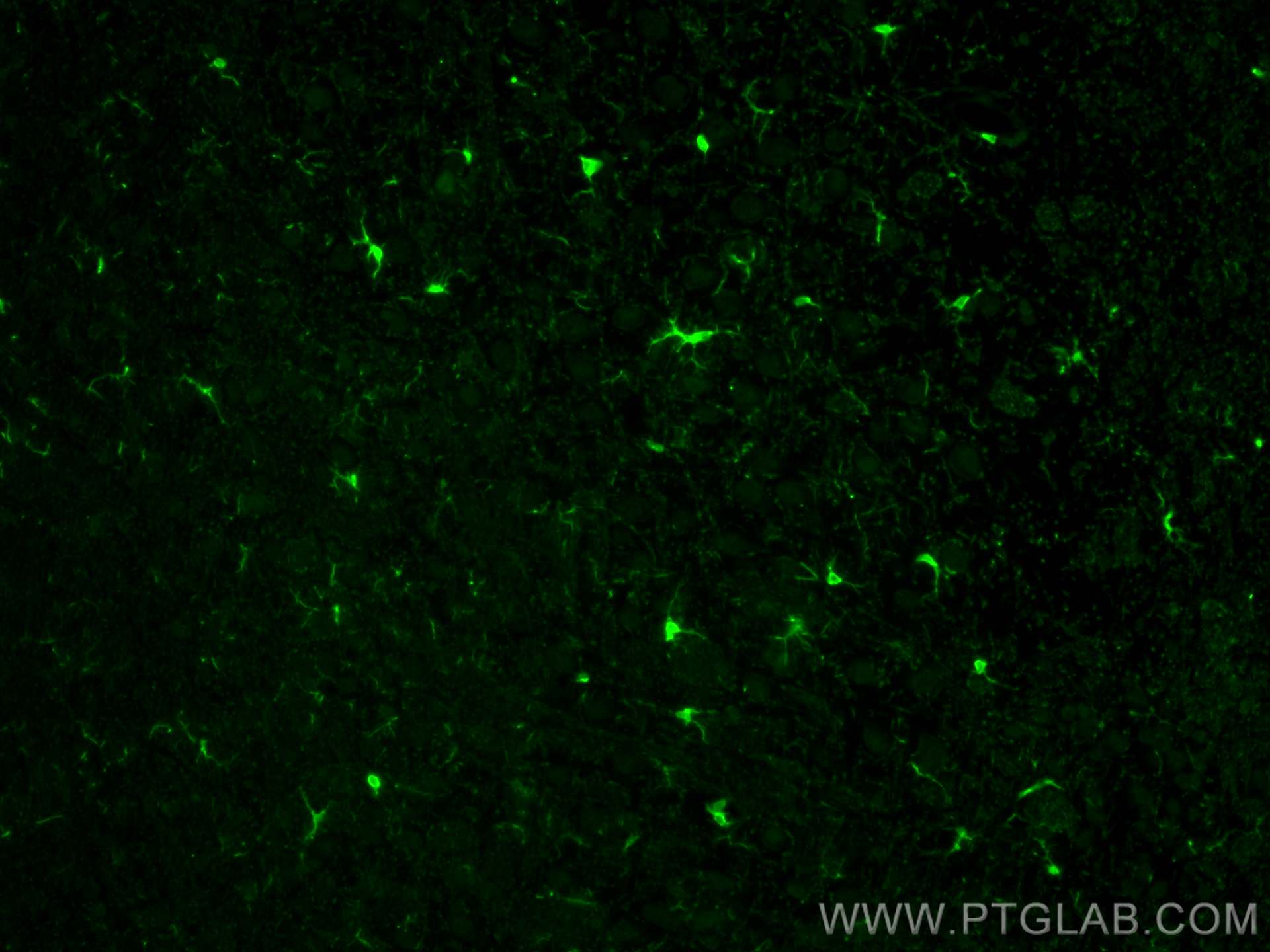IBA1 Polyclonal antibody
IBA1 Polyclonal Antibody for IF, IHC, ELISA
Host / Isotype
Rabbit / IgG
Reactivity
mouse, rat
Applications
IF, IHC, ELISA
Conjugate
Unconjugated
Cat no : 30523-1-AP
Synonyms
Validation Data Gallery
Tested Applications
| Positive IHC detected in | rat brain tissue, mouse brain tissue, mouse spleen tissue Note: suggested antigen retrieval with TE buffer pH 9.0; (*) Alternatively, antigen retrieval may be performed with citrate buffer pH 6.0 |
| Positive IF detected in | rat brain tissue |
Recommended dilution
| Application | Dilution |
|---|---|
| Immunohistochemistry (IHC) | IHC : 1:200-1:800 |
| Immunofluorescence (IF) | IF : 1:200-1:800 |
| Sample-dependent, check data in validation data gallery | |
Product Information
30523-1-AP targets IBA1 in IF, IHC, ELISA applications and shows reactivity with mouse, rat samples.
| Tested Reactivity | mouse, rat |
| Host / Isotype | Rabbit / IgG |
| Class | Polyclonal |
| Type | Antibody |
| Immunogen | IBA1 fusion protein Ag30575 相同性解析による交差性が予測される生物種 |
| Full Name | allograft inflammatory factor 1 |
| Calculated molecular weight | 17 kDa |
| GenBank accession number | NM_019467 |
| Gene symbol | Aif1 |
| Gene ID (NCBI) | 11629 |
| Conjugate | Unconjugated |
| Form | Liquid |
| Purification Method | Antigen affinity purification |
| Storage Buffer | PBS with 0.02% sodium azide and 50% glycerol pH 7.3. |
| Storage Conditions | Store at -20°C. Stable for one year after shipment. Aliquoting is unnecessary for -20oC storage. |
Background Information
IBA1 is a 143 amino acid cytoplasmic, inflammation response scaffold protein. It is constitutively expressed in monocytes and macrophages and is known to be involved in macrophage activation. It is a marker of activated macrophage. Expression of IBA1 is up-regulated in activated microglia following facial nerve axotomy, ischemia, and several brain diseases, thereby implicating it in the activated phenotypes of microglia.
Protocols
| Product Specific Protocols | |
|---|---|
| IHC protocol for IBA1 antibody 30523-1-AP | Download protocol |
| IF protocol for IBA1 antibody 30523-1-AP | Download protocol |
| Standard Protocols | |
|---|---|
| Click here to view our Standard Protocols |
